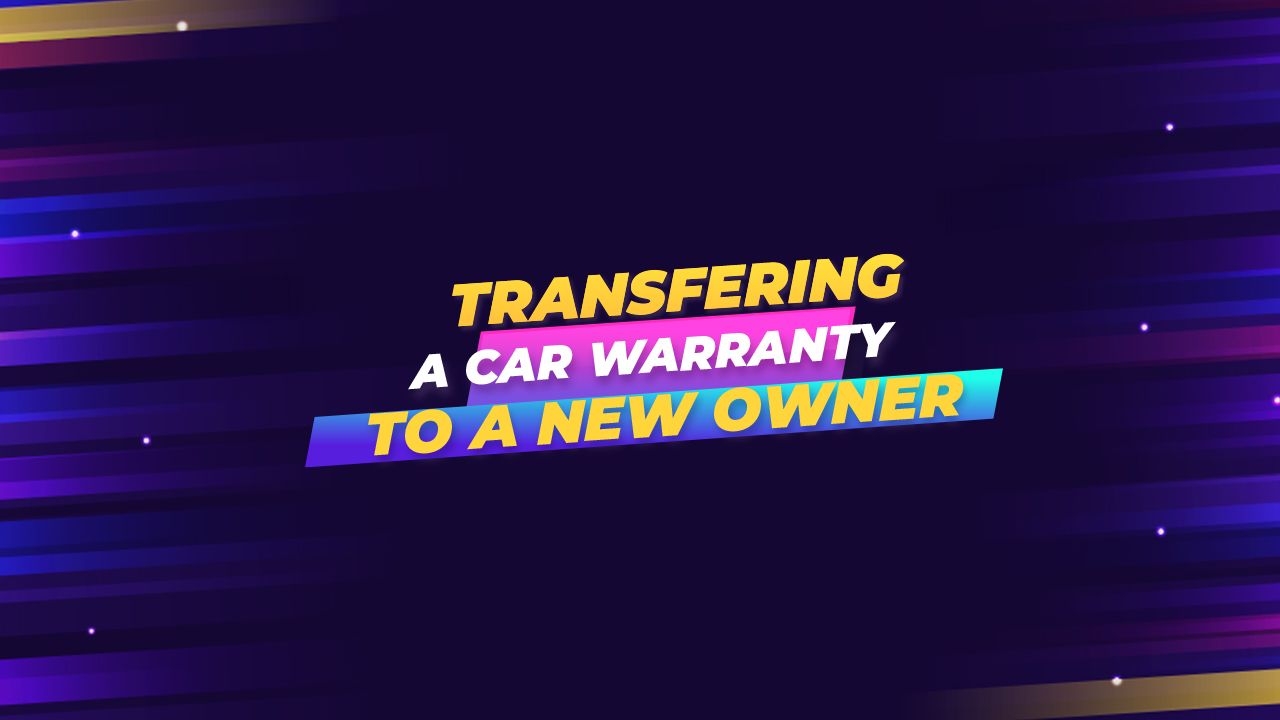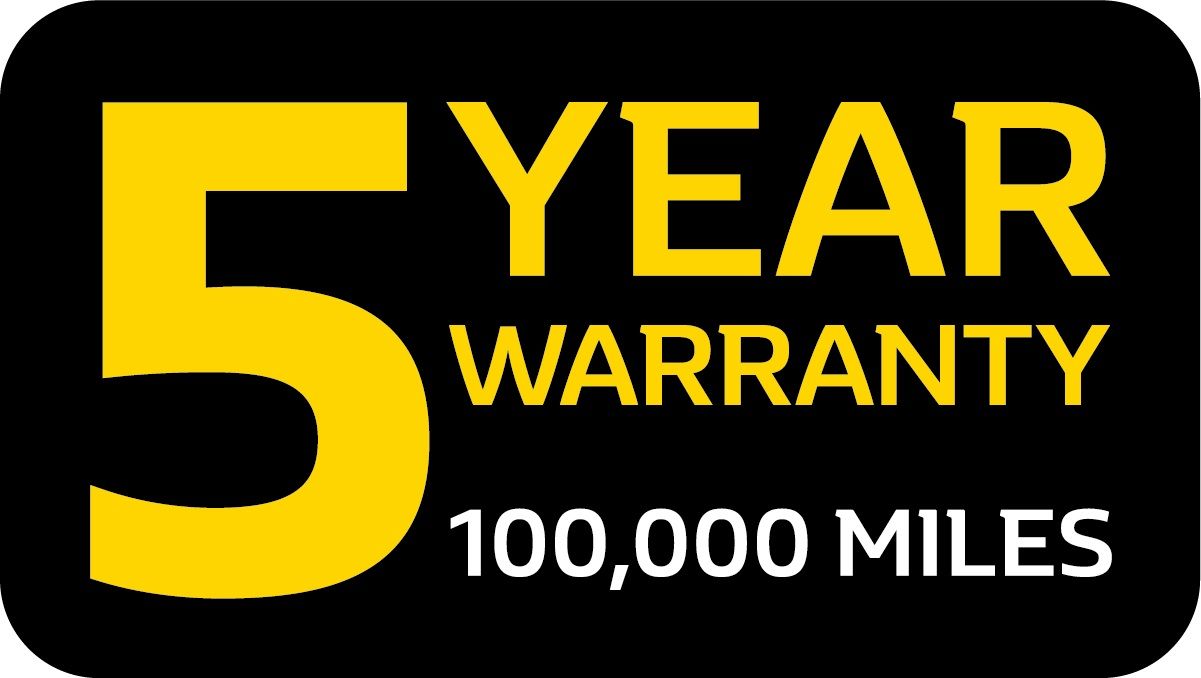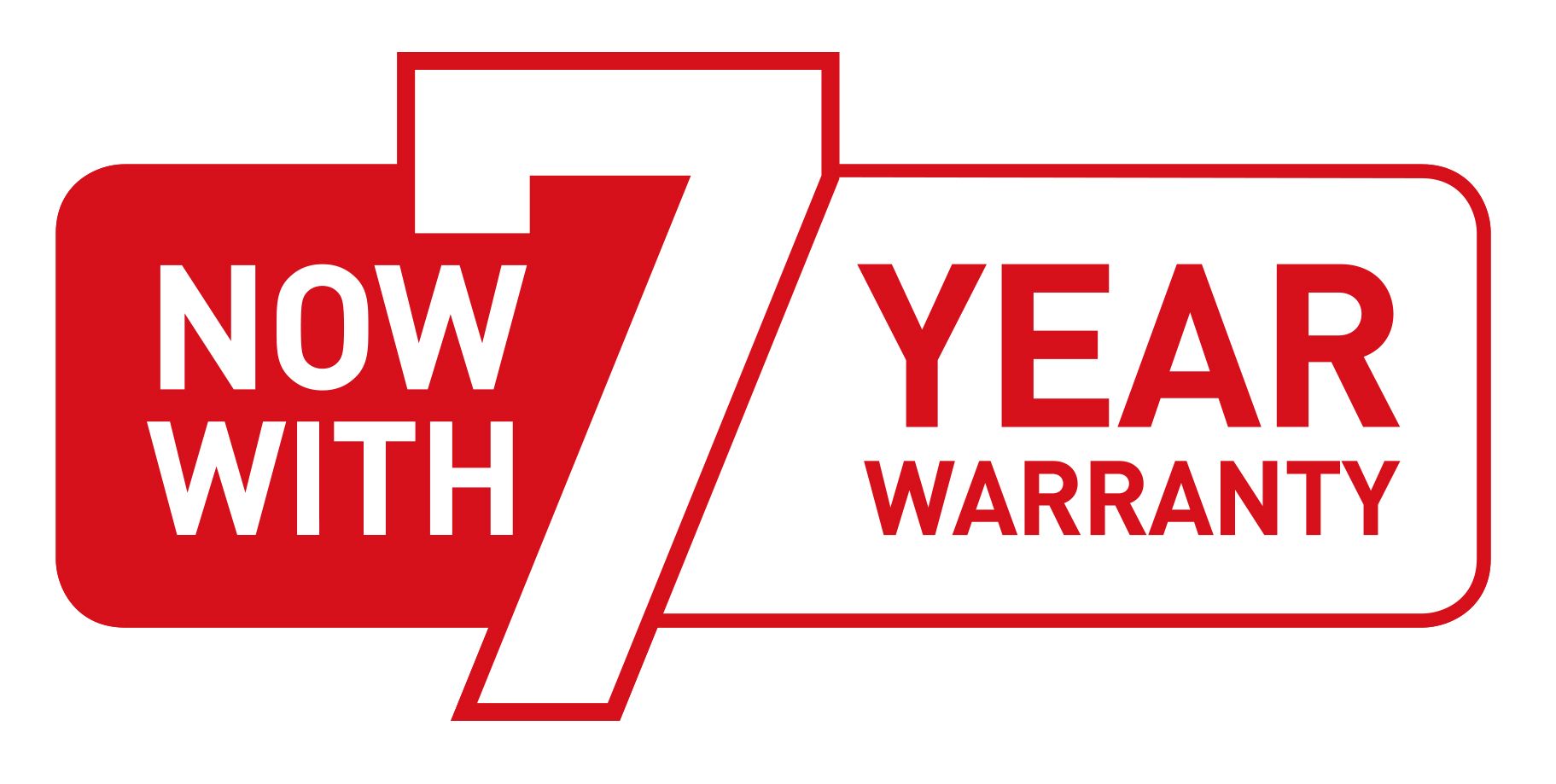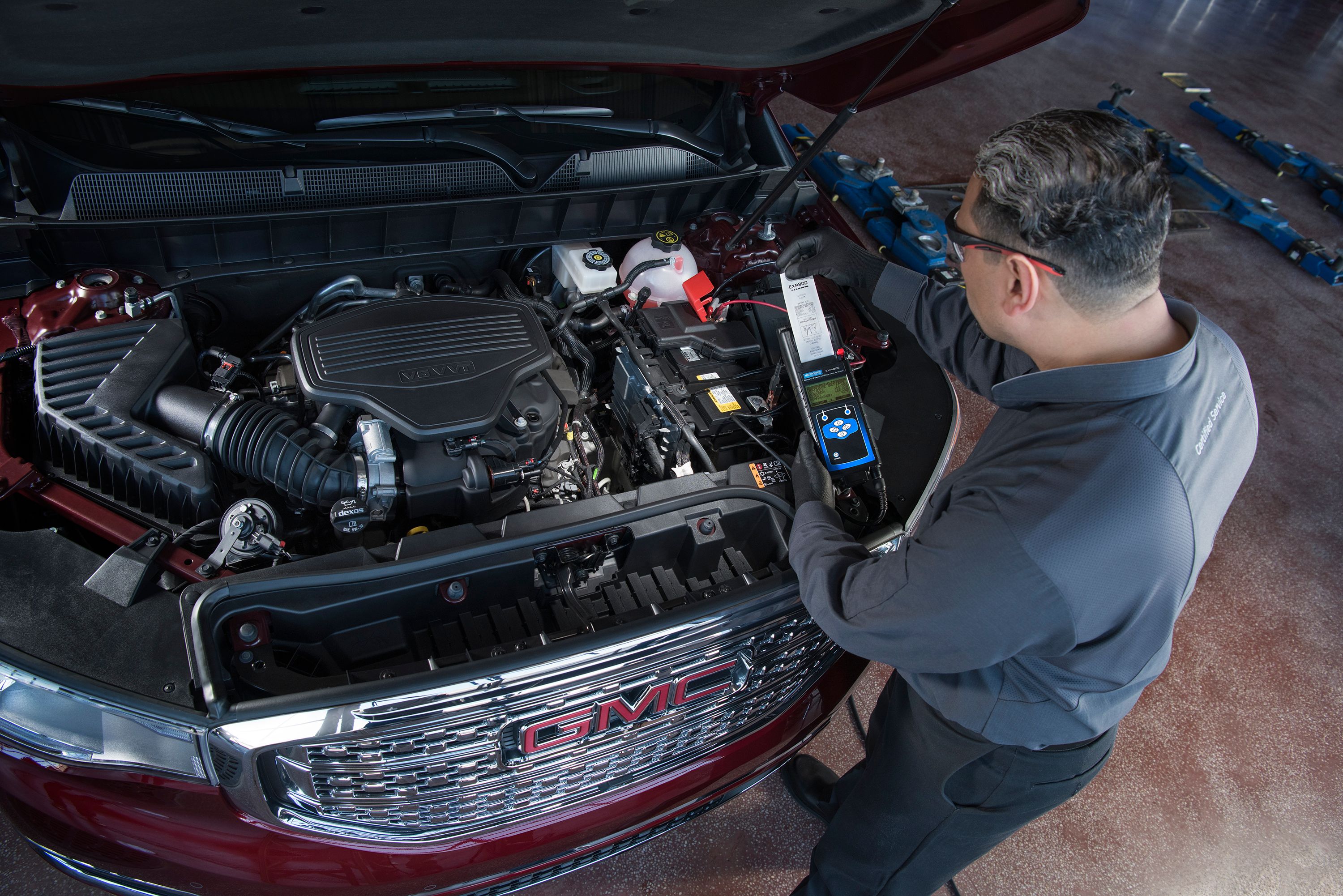When you sell your car, the registration and insurance are transferred to the new owner. But what about your car's warranty? Well in most cases they can be transferred as well and the transfer process is easier than you think. So here's a guide to walk you through the basics of car warranties be it a factory, aftermarket, or certified pre-owned (CPO) protection plan, and how to transfer them so you can get the best deal when you go to sell your car.
Is a Car Warranty Transferable?
The short answer is, it depends. Some car warranties are indeed transferable while others aren't and it all boils down to the terms and conditions penned by the warranty provider. The most important thing to note is that irrespective of the provider and type of coverage, a warranty cannot be transferred from one vehicle to the next since a policy and price is tailored based on a vehicle's make and model.
With the basics out of the way, let's look at how the prices for each plan are formulated. Extended warranty prices work just like an insurance policy. Prices are based on factors like risk of pay-out and factors such as maintenance records, vehicle condition, and other factors that could result in an unforeseen breakdown. Neglecting these terms can lead to the termination of the service contract.
As far as transferability of a warranty is concerned, it depends on the type of warranty that's been purchased. Manufacturer-issued warranties that are for new or Certified Pre-owned vehicles are all transferrable since these warranties are issued directly for the vehicle and are associated with the said vehicle's VIN. As a result, if the registration of the vehicle is transferred, then so is the vehicle's warranty by default.
Warranty plans purchased from a third-party provider are also transferrable in most cases unless the terms & conditions explicitly have a line denying transfer of ownership which is why we urge people to go through the contract in detail before finalizing any form of warranty. With that said, transferring a third-party warranty can involve fees and administrative charges, paperwork, detailed proof of maintenance and services, title transfer documentation and the whole transfer process can also be time-sensitive based on the terms set by the warranty provider.
Do you really need an extended car warranty? Our in-depth guide digs into the pros and cons so you can make the right decisions.
How To Transfer A New Car’s Warranty To A New Owner?
All new cars come with a factory warranty offered by the manufacturer. This warranty issued by the manufacturer can last anywhere from one to five years depending on the brand's policy.
So what if you decide to sell your vehicle during the factor warranty period? In that case, you don't have to do anything to transfer it as a factory warranty is linked directly to the vehicle's VIN, so at the time of sale, the warranty is also transferred with the vehicle, no extra steps are needed.
Selling your car within the manufacturer warranty period can increase your resale value tremendously, especially if the vehicle in question comes from a premium brand such as BMW, Mercedes, etc as they tend to have expensive spares and after-sales support. Even in the case of a popular brand like Toyota or Hyundai, it adds tremendous value.
Another benefit is a used car bought under warranty is eligible for an extended warranty provided by the manufacturer. The used car buyer can simply walk into the dealership and extend the existing warranty plan by another three to five years based on the plans offered by the manufacturer which is a reassuring factor for a used car buyer.
Can't transfer your warranty? Our guide on cancelling your Extended Car Warranty could help you get a refund on the unused portion of your contract!
How To Transfer A CPO Car Warranty To A New Owner?
A CPO is yet another way to buy a used car with total peace of mind. A Certified Pre-Owned (CPO) is a vehicle that is sold by official company-operated dealerships and undergoes rigorous inspection before they are certified for sale under the brand's CPO program.
Since all CPO cars are inspected by manufacturers, they also get their warranty which works like the original manufacturer warranty. Hence a CPO is also associated with the vehicle's VIN and can be verified and just as easily transfer with the car. Most manufacturers do let you transfer CPO warranty, like Ford. But some CPO warranties aren't transferable, so make you read the terms and conditions before getting a used CPO car.
How To Transfer A Third-Party Car Warranty To A New Owner?
After the factory warranty ends, you can opt for an extended warranty for continued coverage and added peace of mind. An extended warranty is a service contract between a customer and a warranty provider that covers a range of repairs after the manufacturer's warranty is over.
The coverage of an extended warranty program usually begins after the expiry of the manufacturer's factory warranty program. A typical Extended Warranty program covers repair and replacement costs of electrical and mechanical components, which in some cases include problem areas not covered by the manufacturer. A warranty program can last anywhere from one to eight years and most manufacturers offer in-house extended warranty programs while you purchase your vehicle. Both third-party and manufacturer extended warranty programs start from as low as $1000 and pre-repair deductibles reach as high as $100.
A car with a third-party warranty will without a doubt add to the vehicle's resale value, provided your warranty plan is transferable. So make sure that the extended warranty plan you purchase, be it from the manufacturer or a third-party vendor gives you the provision to transfer the warranty to a new owner.
How Does The Car Warranty Transfer Process Work?
If the warranty provider, be it the manufacturer or a third-party warranty provider has the option to transfer the warranty, then the procedure is as simple as calling or writing to the company with the sale details and the information of the new owner. This is a process that can take up to 30-days post which the new owner can claim the full benefits enjoyed by the former owner.
The process for transferring the warranty to a new owner is also straightforward. Start by checking what type of coverage is offered with the vehicles. In case of a dealer warranty, you can call the dealership, share the vehicle's VIN and check what kind of coverage that plan offers and the time/miles remaining. The transfer process usually doesn't require much else since the warranty is associated with the vehicle's VIN.
In the case of a third-party warranty, the process is similar but they usually require basic contact info of the new owner along with documentation and receipts proving the transfer of ownership.
If you're not sure whether or not your car has an extended warranty, we have a guide to help you check if you have coverage or not.
The Cost Of Transferring Car Warranties
Unlike most manufacturer extended warranties, third-party warranty providers generally charge a fee for transferring the contract to a new owner. There are no standard transfer rates and some companies will even do it for free however this fee can be as high as $100.
So it is always advisable for the current owner to check with their warranty provider if there are any transfer charges and how much so that the selling process can be completed smoothly without any hidden costs for the new owner.
Top Recommendations For Transferable Extended Car Warranties
When it comes to third-party warranty providers, we strongly recommend getting in touch with them to try and get the best deal since most of them will offer you a discount over the quoted price if you ask for one. Olive and Endurance are some of the best third-party warranty providers that offer the option of transferring ownership. Here's a brief review of these providers:
What Warranty Companies Allow Transfers?
Uproar:
Uproar is based out of Seattle, Washington, but it’s not like any other extended car warranty company out there. Uproar bills itself as an innovator, which makes a lot of sense considering it’s the first extended warranty company to offer a 100-percent digital, subscription-based experience. The main highlights of uproar include an instant quote and signup online, same-day coverage, no long-term commitments, transparency, and no aggressive salespeople or robocalls. They are BBB accredited and have five-star ratings from both Google and Consumer Affairs.
Endurance:
Endurance is one of the biggest names in the third-part warranty space and offers a plethora of plans to cater to a wide range of customer needs. The Endurance Advantage™ plan covers mechanical breakdowns and maintenance through three levels: Preferred, Plus, and Prime. These plans cover all basic maintenance parameters like oil changes, engine checks, and brake pad replacements, along with additional services like roadside assistance, towing, and rental car reimbursement. Some of the other benefits include:
- Coverage for cars up to 20 years old
- Basic powertrain warranty options are available
- Inspection required before a claim can be filed
- Extra perks with all-inclusive membership
- Join & save $300 on a protection plan
Olive:
With one of the highest satisfaction rates in the industry, a result of their extremely reasonable pricing structure, Olive is yet another provider that has built up quite a fan following. And the cheaper prices mean you can set aside those saving and use them towards routine maintenance.
- For cars up to 10 years old/ 140k miles
- 100% online extended warranty solution with customizable plans
- File claims online 24/7
- Affordable monthly payments
- Call for a quote & get a free $5 gift card







